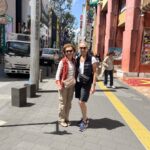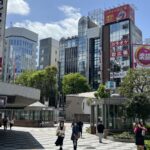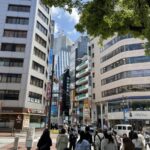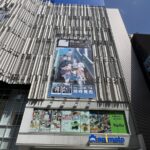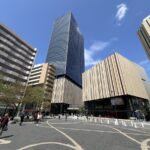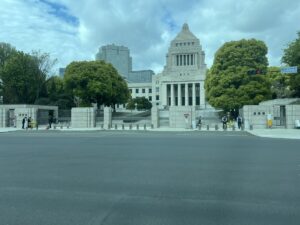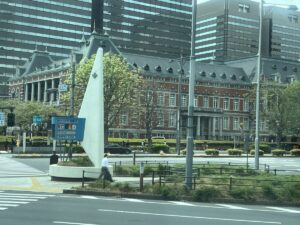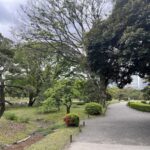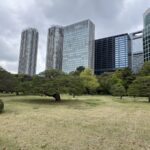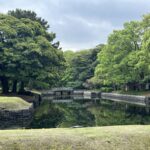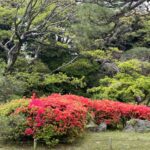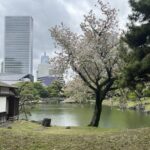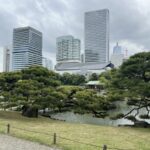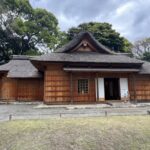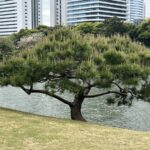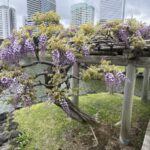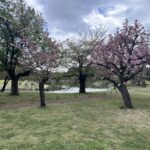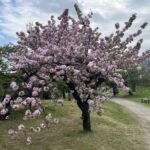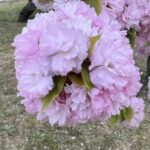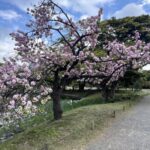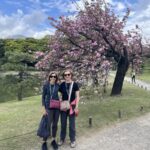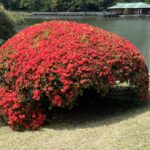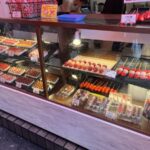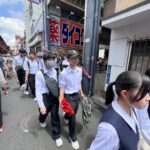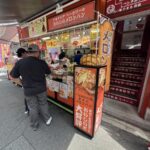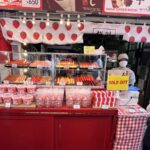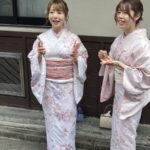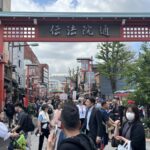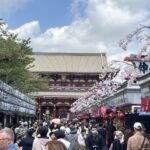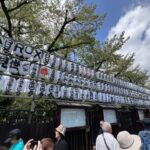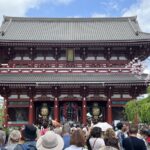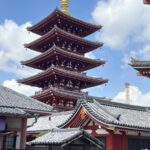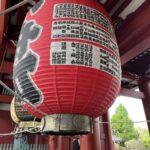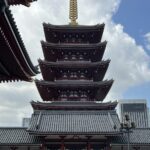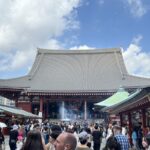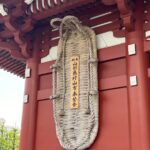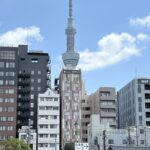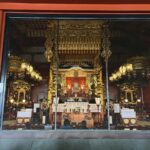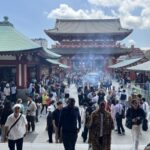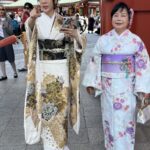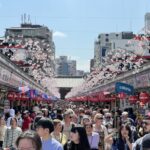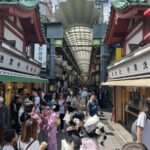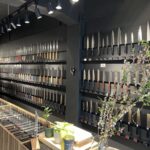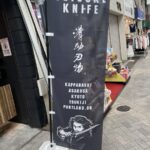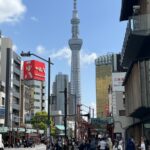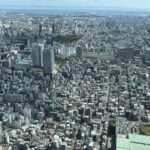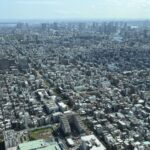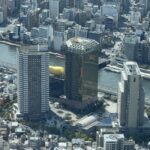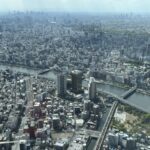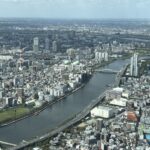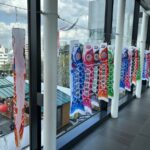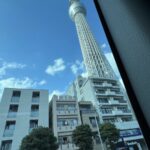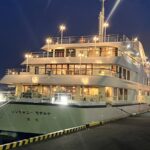Two days in Tokyo together with Ronnie and Jen. The first day we wondered around the streets of Ikebukuro and found a Uni Qlo for Ronnie. This area is modern and full of diverse individuals. Of course we stumbled across a British pub. We were staying at the Sunshine City Prince Hotel which was a huge hotel just turning over groups day after day. The restaurant was like a canteen. Not a hotel I would recommend. We found a nice pizza restaurant that evening in the shopping complex next door and it was a really nice change from all the japanese food we’d been experiencing over the past week.
We commenced our bus tour on the following day, which was a sightseeing tour of Tokyo. We drove around the city with our guide pointing out many buildings of interest. We drove around the Tokyo Imperial Palace before heading to Hama-rikyu Gardens. We also passed by the famous fish markets and the Ginza district, which is Tokyo’s glitziest district.
This beautiful Edo-period (1603–1867) garden with a teahouse built to look as if it were floating on the water is a world separate from the high-rise buildings of the city. The garden is located on the edge of Tokyo Bay, and is the only Edo garden to incorporate seawater into the garden’s pond.
The Hama-rikyu Gardens are built around a central pond known as the Tide Inlet Pond. In the middle of the pond is the Nakajima teahouse, where you can sit down to enjoy a cup of matcha tea throughout the year. The garden’s pond is connected to the sea, and water flows in and out with the tide, meaning the park is in a permanent state of flux.
The Hama-rikyu Gardens were opened to the public in April 1946, but served as a feudal and imperial retreat for several centuries before that. The gardens, almost as they are now, were completed during the time of the 11th Tokugawa shogun, Tokugawa Ienari. After the Meiji Restoration of 1868, they became a villa belonging to the imperial household, before being given to the city of Tokyo in 1945.
Next stop the Sensoji Temple. The Sensoji Temple is also known as Asakusa Kannon and is an ancient Buddhist Templein in Asakusa, Tokyo, Japan. It is Tokyo’s oldest-established temple, and one of its most significant. It is dedicated to Kannon, the bodhisattva of compassion. Structures in the temple complex include the main hall, a five-story pagoda and large gates. It is the most widely visited religious site in the world with over 30 million visitors annually.
The temple was destroyed during a 10 March 1945 fire bombing air raid on Tokyo during World War II. The main hall was rebuilt in the 1950s. Formerly associated with the Tendai sect of Buddhism, the temple became independent after the war. Leading to it is Nakamise-dōri street, containing many shops with traditional goods. Adjacent to the east of Sensōji is the Asakusa Shrine of the Shinto religion. It was packed today. I did rather like the large flip flop made out of wood that was attached to a wall of the temple. We enjoyed sampling some of the nuts and sweets that were on display. I also noticed that there were a lot of knife shops around.
Then on to Tokyo Skytree which is the tallest structure in Japan and the tallest tower in the world. It is predominantly a television and radio broadcast tower and is earthquake resistant.
We finished off the day off with a Japanese dinner cruise on Tokyo Bay.



